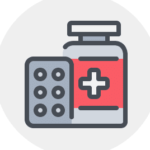Testosterone replacement therapy (TRT) has long been a critical treatment for men experiencing symptoms of low testosterone, such as fatigue, reduced muscle mass, and decreased libido. However, access to TRT was once limited due to geographical barriers, cost, and the time required to visit specialized clinics in person. With the rise of best online trt clinic, treatment has become significantly more accessible and affordable for patients who need it most.
The Challenges of Traditional TRT Access
Before the rise of online TRT clinics, patients often encountered significant obstacles when seeking access to treatment. Many specialized clinics were located in urban areas, making access for those in rural or remote locations difficult and time-consuming. Additionally, scheduling regular appointments often meant taking time off work, further adding to the inconvenience.
The cost of traditional clinics could also be prohibitive. Between consultation fees, lab tests, and follow-up appointments, patients often faced steep bills, leaving TRT out of reach for individuals without adequate insurance or disposable income. These factors created an unnecessary barrier for many men who needed therapy to improve their quality of life.
Transforming Accessibility Through Online TRT Clinics
Online TRT clinics have reshaped the landscape, making treatment accessible to men regardless of their location. Virtual platforms eliminate the need for frequent in-person visits by connecting patients with licensed healthcare providers through secure video calls. This convenience allows patients to access high-quality care from the comfort of their own homes, breaking down geographical barriers that once existed.
Additionally, online services often feature streamlined processes for diagnostic testing. Patients can complete their lab work at nearby laboratories or via at-home testing kits, which are then reviewed by qualified professionals. This flexibility further enhances the accessibility of TRT, ensuring that men in any corner of the country have equitable access to care.
Affordability Reimagined
Cost is a significant concern when it comes to medical treatment, but online TRT clinics have made strides in making therapy more budget-friendly. Virtual clinics often operate with lower overhead costs compared to traditional facilities, and these savings are passed on to the patient. Many online platforms offer affordable consultation fees, clear pricing models, and personalized treatment plans tailored to the patient’s needs and budget.
Online systems also allow for recurring prescriptions to be delivered directly to a patient’s home, reducing additional travel costs. Many platforms provide subscription models, ensuring regular access to medication at a predictable cost. By minimizing extraneous expenses, online TRT services make it easier for patients to commit to long-term treatment.
Maintaining High Standards of Care
One of the major benefits of online TRT clinics is that accessibility and affordability do not come at the cost of quality. Certified healthcare professionals guide patients through every stage of their treatment, from diagnosis to dosage adjustments. Secure platforms ensure private and confidential communication, earning patient trust in this new mode of care delivery.
Furthermore, advanced digital tools such as online dashboards allow patients to track their progress and communicate with their providers, enabling proactive management of their health. This integration of technology ensures that online clinics not only meet but often exceed the standards of traditional care.
Why Online TRT Clinics Are the Future
Online TRT clinics have revolutionized testosterone replacement therapy by removing the barriers of cost and accessibility while maintaining excellent standards of care. They empower men to seek treatment that fits into their lives, offering convenience, affordability, and professional guidance every step of the way. For many, these clinics represent the future of how healthcare is delivered—efficient, patient-centered, and universally accessible.






